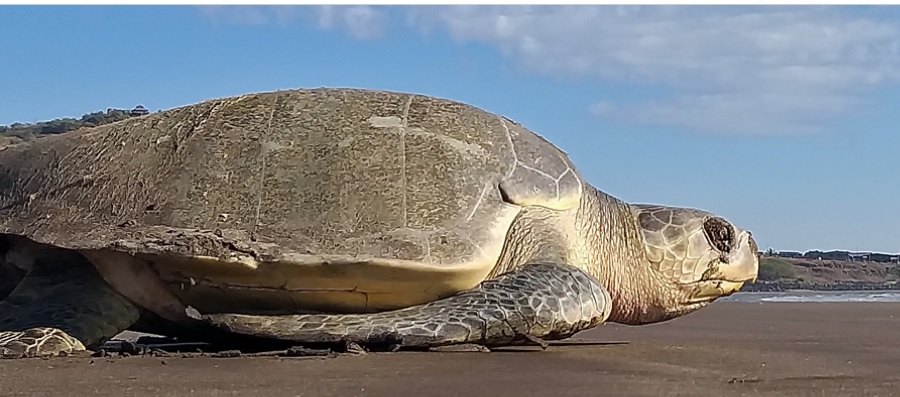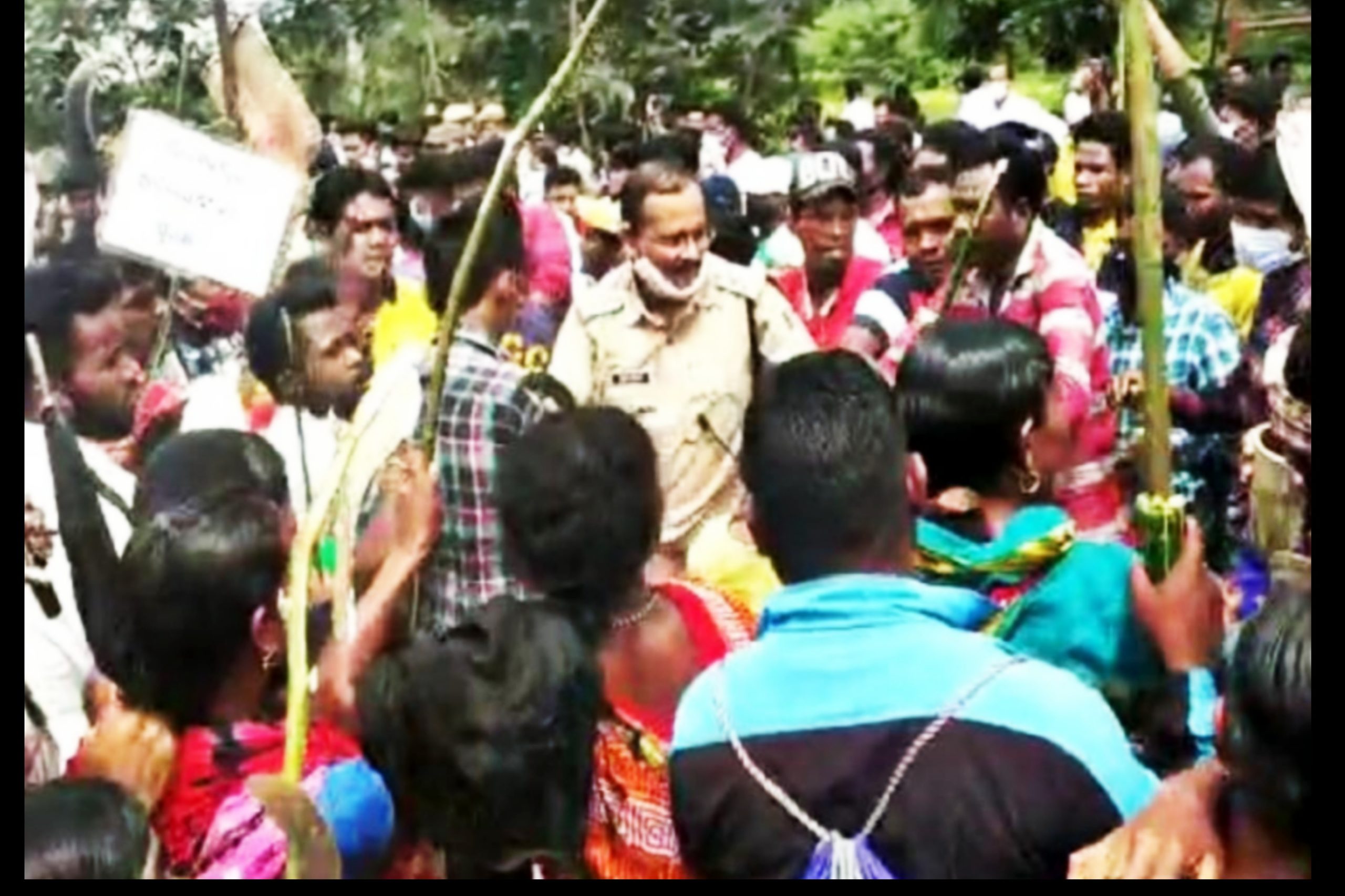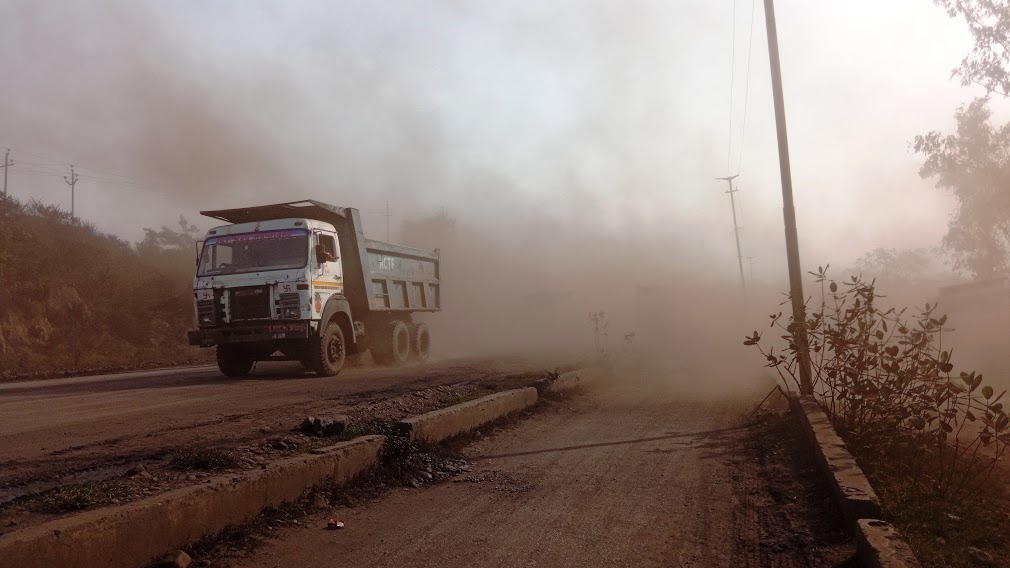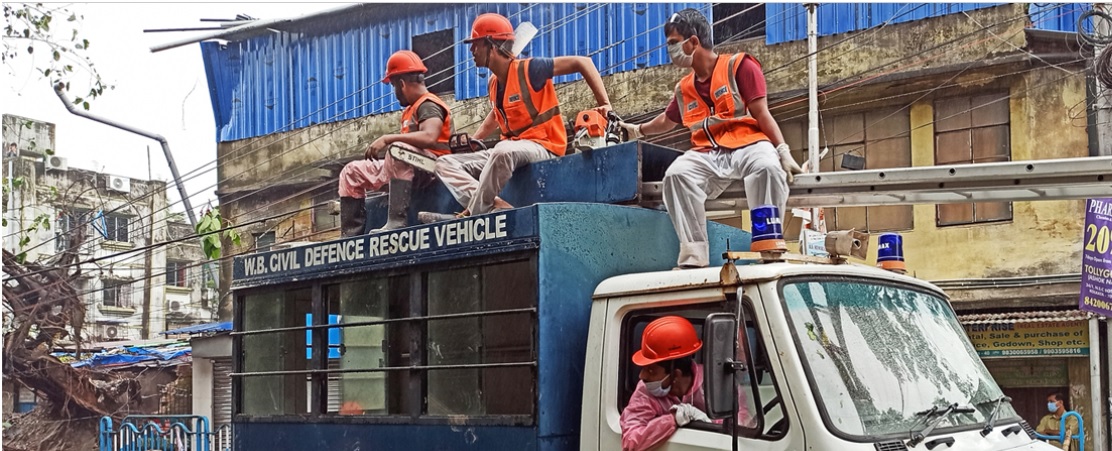
- It’s the season for the annual nesting activity of olive ridley turtles in India’s coastal states Odisha and Maharashtra.
- This year though, Odisha is witnessing day time nesting after a gap of nearly seven years.
- The ongoing lockdown to curb the spread of COVID-19 has had no impact on the mass nesting activity, say officials. In Odisha though, it has given the officials time to focus on caring for the turtles rather than focusing on tourists.
- In Maharashtra the annual turtle festivals that take place during olive ridley nesting season have been called off by the locals as a precaution during the COVID-19 outbreak.
The eastern Indian state of Odisha is known worldwide for seasonally hosting olive ridley sea turtles (Lepidochelys olivacea) en masse as they visit the seashore along the Bay of Bengal for mass nesting. This spring (March 2020), however, heralded a surprise for the marine conservationists and state forest department, who witnessed mass nesting of the species during the day after nearly seven years.
Local government officials taking care of the sea turtles told Mongabay-India that the daytime nesting along the Rushikulya rookery was recorded after seven years.
“The last time we saw day time nesting of olive ridleys along this site was in 2013. Usually, they come on to the beach for nesting only during the night. This March was special for us as we saw the species visiting the site at night and even during the day, in equally good numbers,” Amlan Nayak, district forest officer (DFO), Berhampur (Odisha), told Mongabay-India.
Rushikulya is situated in the Ganjam district of Odisha along the Bay of Bengal and is one of the most prominent locations for olive ridley mass nesting, an annual feature where female turtles arrive on the beach to prepare their nests and lay their eggs.
Such mass nesting events are called arribadas (a Spanish word meaning arrival).
The olive ridley turtle is considered the most abundant sea turtle in the world, with an estimated 800,000 nesting females annually. The olive ridley is globally distributed in the tropical regions of the South Atlantic, Pacific, and Indian Oceans. They are listed as vulnerable in the IUCN Red list and are also protected under the Wildlife Protection Act of 1972.
According to wildlife experts, in India, while states like Maharashtra, Goa, and the offshore Andaman islands witness sporadic nesting of olive ridley turtles, Odisha is the only state in India that sees mass nesting of olive ridley turtles.
Rushikulya and Gahirmatha are the two principal mass nesting sites at this point in Odisha.
This year nesting at Rushikulya has been a little delayed due to recent torrential rains in the region. It usually starts in the third week of February and continues until the first week of March, officials said. This year, mass nesting started from March 21 and has continued till March-end, even during the day.
According to Nayak, the Rushikulya rookery hosted 330,000 olive ridleys during this mass nesting phase.

The nesting activities this time coincided with the lockdowns (announced by the state government and then the Centre) in a bid to curb the spread of the COVID-19 pandemic. With no tourists flowing in to witness the annual affair, there has been least human interference to the nesting site. However, most experts and government officials denied that the lockdown has had any impact on the nesting activities of the sea turtles.
“I do not think the lockdown period can have any impact on the nesting activities of the olive ridley turtles. But what the lockdown can do is that it can reduce the casualties of the sea turtles or the damages their eggs undergo in normal days. However, in the absence of human movements, pest attacks and attacks from other animals, can increase as well,” S.N. Patro, an environmentalist from Bhubaneswar and the president of Orissa Environment Society, told Mongabay-India.
Rabindranath Sahu, secretary, Rushikulya Sea Turtle Protection Committee, said as per the local communities’, the turtles are also known to nest even close to their homes.
“They (turtles) are quite confident. The village communities in Rushikulya have known of arribadas of olive ridley turtles since time immemorial. The turtles want a clean and dry beach. They have to feel safe. Since September 2019 efforts were on to clean the beach. Due to the debris deposited on the beach following cyclone Titli (in 2018), the mass nesting was not seen last year (in 2019),” Sahu said. In contrast, Rushikulya hosted mass nesting twice in 2018, first in February and then in April.
“The breeding season for the turtles spreads from November to May including mating, nesting, and hatching. Each turtle can lay between 100 to 160 eggs in an hour,” explained Sahu.
Lockdown allows authorities to improve care for turtles
Nayak also rebutted speculations doing rounds on social media that link the impact of the imposed lockdown on the movement and nesting activities of the turtles, including the turtles “reclaiming” the beaches.
“We already have regulated movement of humans close to the nesting areas at Rushikulya. We do not allow people to go too close to the nesting hotbeds. But the advantage of lockdown was that we could divert our workforce more towards cleansing the debris on beaches and counting the nesting activities. When tourists come, part of our manpower is diverted to regulate and manage them,” Nayak explained.
Wildlife Institute of India researcher Bivash Pandav also asserted that lockdown has had no impact on mass nesting of turtles.
“If the turtles were indeed responding to the lockdown then they should have been nesting at Gahirmatha all the time where the beach is permanently locked down, due to inaccessibility and presence of defence establishment. This is totally absurd and too much imagination by some people. Turtles strictly respond to certain environmental variables like tidal conditions, wind direction, lunar phase, and nest in mass accordingly,” Pandav told Mongabay-India.
Both the mass nesting hotspots (Gahirmatha and Rushikulya) are located close to the biodiversity-rich regions of Odisha. While the Gahirmatha site is adjacent to the Bhitarkanika Wildlife Sanctuary, Rushikulya is close to the Chilika Lake, Asia’s largest brackish water lagoon.
At Gahirmatha marine sanctuary, as many as 407,194 olive ridley turtles laid eggs from March 14 to March 21. Combined with the number of turtles that nested at Rushikulya, government officials claim close to 800,000 turtles have come to nest.
However, a section of environmentalists disagrees with the numbers.
“Nesting has been in lakhs but it cannot be close to 800,000. Not all turtles that are seen actually lay eggs. Most of them go back to the sea without laying eggs. I have reservations against the methodology the government uses to estimate the nesting. Close to a decade ago it was more precise and scientifically backed. It was done under the Wildlife Institute of India and was also well scrutinised,” Biswajit Mohanty, another Odisha-based environmentalist, told Mongabay-India.
He emphasised that nesting is a natural process of the sea turtles and as the human intrusion into the area is already regulated there are fewer chances of the impact of the lockdown on their nesting activities.
Odisha’s forest department, however, refuted Mohanty’s assertions and said that sampling methods with hourly counting on segmented areas of the site are studied at a regular interval to get a real picture. “The data is scientifically backed and one of the widely accepted methods of estimation,” said a forest department official, while requesting anonymity.
Maharashtra calls off turtle festival
In Maharashtra’s Velas and Anjarle villages in the state’s Ratnagiri district along the Konkan coast, the gram panchayat (village committee) and local community members were unanimous in calling off the turtle festivals that span through March each year, in the wake of the COVID-19 outbreak.
“The turtle festivals are quite popular with domestic tourists and we also receive tourists from abroad. In Velas, we have homestays while in Anjarle, we have both hotels and homestays. If the coronavirus infection spreads then both the communities in the village and the tourists will be affected,” Mohan Upadhye, who is associated with the festivals, told Mongabay-India.
Upadhye said homestay owners who are from the village itself and the gram panchayat usually make a decision on the dates of the festival depending on the timing of the olive ridley turtle nesting and potential hatching of eggs.
“We declared the festival in February. The dates are declared when the incubation period is over and the hatchlings have just started emerging. In November, we have observed for the past two to three years that there are hardly any nests. In Raigarh and Ratnagiri districts, the nests were spotted in mid-December,” said Upadhye, adding that on average 150 to 200 female turtles nest along 14 sites in Ratnagiri district.

“In Ratnagiri out of 14 nesting sites, we organise the festival only in two villages, Velas and Anjarle, based on the fact that the local communities are prepared to tackle crowds and ensure the hatchlings are not disturbed as they make their way to the sea. We also do not allow any night-time activities (usually the nesting time for turtles). So even without the lockdown, our mechanisms are in place to maintain a healthy ambience for the turtles,” said Upadhye.
“The other reason why we decided to cancel the festivals this year because we do not know if the virus spreads to the species of the turtle as research is ongoing and there are a lot of unanswered questions,” he explained and stressed that one careless act could irreparably hurt the community’s conservation actions and reputation.
Upadhye emphasised that the disease should not accidentally spread because of the conservation actions (turtle festival) that have been painstakingly put in place by the community members over the years.
“The conservation work with olive ridley turtles was started by Sahyadri Nisarga Mitra in 2002. The turtle festival was initially started as a one-day event by SNM in 2006 in Velas as part of community conservation. Along the Konkan coast where the nesting happens, local communities would eat the turtle eggs. One positive impact of the conservation efforts is that when people spot nests or turtle tracks they inform us,” he explained.
Upadhye revealed this year they have got reports from “people about nests in certain beaches where nests have not been spotted in years” but refused to link that to the COVID-19 related lockdown.
In 2012-2013 the project in Velas was handed over to the village. So in Velas, gram panchayat, Kasav Mitra Mandal (KMM) and forest department handle the work while in Anjarle, KMM, SNM, forest department, and the gram panchayat are active.
“Currently, the beach managers (local community members who used to volunteer with SNM are hired from November to May by the forest department) are making sure the hatchlings reach the sea safely. They work only either in groups of two or solo,” said Upadhye.
Banner image: Olive ridley turtle on a beach along the Maharashtra coast. Photo by Mohan Upadhye.






